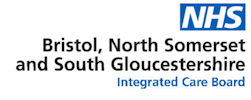

***UPDATE June 2025 - The remote assessment of suspected skin cancer pathway has been rolled out across all BNSSG - see details in Referral section below.***
The suspected skin cancer service is provided by UHBW at the Bristol Royal Infirmary and NBT at Southmead Hospital. The services are for patients who meet the NICE Skin Cancer criteria. This service is for adults aged 16yo and over.
Suspected Skin Cancer in Children
Please note that skin cancer is exceptionally rare in children. Any skin lesions suspicious of cancer in patients aged under 16 should be referred using the Children & Young People USC (2WW) referral form.
Remote (teledermatology) service for suspected skin cancer
Following on from the successful pilot of a Teledermatology Service for Suspected Skin Cancer Referrals in 2024/25 this service has now been rolled out across BNSSG.
Remote assessment of suspected skin cancer offers a timely and effective route to diagnosis and treatment while enabling patients to be cared for closer to home. This referral route should be the default option for patients with a suspected skin cancer.
Information about this service including the inclusion/exclusion criteria is detailed in the following document:
The Suspected Skin Cancer Referral Form is embedded in EMIS and details the criteria for Urgent Suspected Cancer skin referrals.
The following are available on the ICB website; Accurx messages containing these links are available to share with patients
Referral Pathway Outline
Referral of lesions near the eye
UHBW referrals - secretaries will need to book dummy appt slots as per other USC referrals.
NBT referrals - secretaries should select 'send for Triage'
If referring with images attached referrals should be sent to:
or
If the patient meets the exclusion criteria or declines referral on this pathway then patients can be referred to OPA using
Or
If advised to refer into Multidisciplinary Team (MDT), then please submit a USC referral to the relevant secondary care team as above, who will ensure that all the required information is available to enable an effective MDT discussion.
Advice and guidance is not suitable for patients with a lesion that meets USC criteria, but if you would like advice on a skin lesion that you suspect is NOT high risk (ie. NOT a melanoma or invasive squamous cell carcinoma) please consider using the Dermatology Advice & Guidance service (e-RS).
For further guidance including weighted 7 point check list please see NICE Cancer Guidelines 2015 - Skin Cancers
There are useful resources and pictures on the PCDS website at the links below:
Further information on Acral-lentiginous melanoma (pcds.org.uk) assessment is also available
Basal Cell Carcinoma (usually not USC unless there is particular concern that a delay in treatment may have a significant impact, because of factors such as lesion site or size. Please see the Suspected Skin Cancer Referral Form for details of which head and neck BCCs should be referred via this route)
Benign Skin Lesions
Please see the Benign Skin Lesions Remedy page.
Please note that patients with Actinic Keratosis should not be referred via a USC pathway unless malignancy is suspected. Please see the Actinic Keratosis page for further information.
PCDS guidance Acral-lentiginous melanoma
Dr DeBerker (UHBW Dermatologist) also advises as follows;
Consider subungual melanoma in the following scenarios:
Contact details ADULT USC/2WW office:
NBT - Tel on 0117 414 0522 / 0536 / 0537 / 0538 or email to fasttrackoffice2ww@nbt.nhs.uk
UHBW - Tel on 0117 342 3277 or email to FastTrackOffice@uhbw.nhs.uk
Efforts are made to ensure the accuracy and agreement of these guidelines, including any content uploaded, referred to or linked to from the system. However, BNSSG ICB cannot guarantee this. This guidance does not override the individual responsibility of healthcare professionals to make decisions appropriate to the circumstances of the individual patient, in consultation with the patient and/or guardian or carer, in accordance with the mental capacity act, and informed by the summary of product characteristics of any drugs they are considering. Practitioners are required to perform their duties in accordance with the law and their regulators and nothing in this guidance should be interpreted in a way that would be inconsistent with compliance with those duties.
Information provided through Remedy is continually updated so please be aware any printed copies may quickly become out of date.